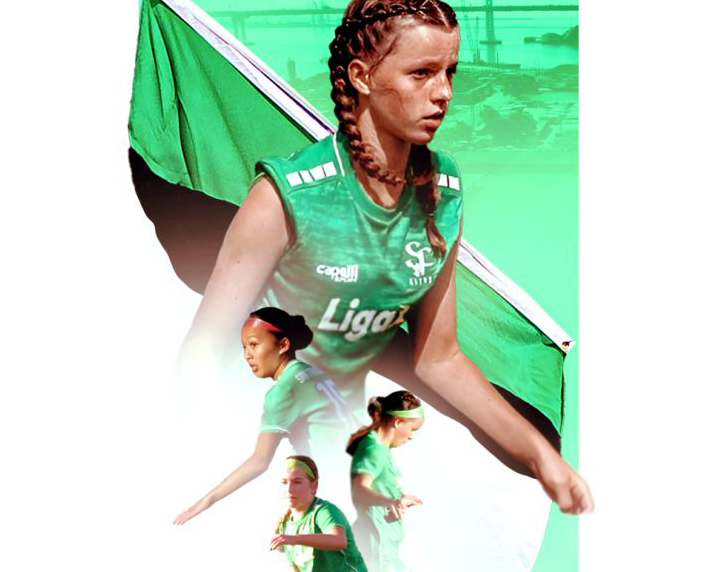When we mention soccer and injuries in the same sentence we tend to think of ankle sprains, torn ACLs and other injuries that are specific to the lower body. Although lower body injuries are the most commonly seen soccer injuries- to the field players- we fail to include the incidence of injury to the last line of defense on the field; the goalkeepers!
Listed below are a few of the most common injuries seen in the soccer goalie population, as well as some tips to help reduce the risk.
- Injuries to the Shoulder:
- Glenoid Labral Tears- The glenoid labrum is similar to the meniscus in the knee. Composed of cartilage, the labrum encircles the head of the humerus(upper arm bone) acting as a cushion and also deepening the socket to provide more stability. The labrum can be torn following a dislocation or subluxation of the shoulder. This can occur when a goalie dives to save a ball and lands on their side with their arms above their heads or if their arms are forced back following contact with the ball or opposing player. Also referred to as a SLAP tear/lesion or a Bankart tear.
- Acromio-clavicular Joint Injury- The acromio-clavicular joint is located where the collarbone (clavicle) meets the highest point of the shoulder blade (acromion). Connecting these two bones, lies a small ligament that can become torn following a fall. The most common cause of injury to the AC Joint is a fall directly on the side of the shoulder following diving, tripping or being tackled. Also referred to as a separated shoulder or AC Joint Sprain and are classified into three grades depending on severity.
- Clavicle Fracture- The clavicle, or collarbone, is the long thing bone that lies just below your neck and connects to your sternum and shoulder blade. The clavicle can be broken following a fall directly onto the side of your shoulder or due to a collision. Also referred to as broken collarbone.
- Injuries to the Elbow, Forearm, Wrist & Hand:
- Elbow Dislocation- The elbow joint connects the humerus (upper arm) to the radius and ulna (forearm) and is responsible in the flexion, extension and rotation of the forearm. An elbow joint dislocation can occur from the force that travels to the elbow from a fall on the outstretched arm. Also referred to as a broken elbow.
- Fracture- Fractures, or broken bones, can occur to any bone in the body. When speaking of soccer goalies through, fractures are more commonly seen to the forearm, wrist and fingers. Fractures can occur from a fall onto the arm or hand or from catching the ball improperly. Should a fracture occur, it is imperative that you visit a hand surgeon.
Injury Prevention:
- Proper position training – Goalies must learn how to properly jump, dive, fall and catch the ball before taking the field. Without learning proper positioning during jumping, diving onto the ground or catching the ball a goalie places themselves at a much higher risk of injury. Fortunately, there are places such as family medicine facilities that deal with sports injuries and can treat them efficiently, but the best tool really is prevention.
- Be aware of surroundings- Due to the small space a goalie is designated to, the cross bars they dive in between and the multiple field players that will enter their box to score or defend their goal, goalies have a very high risk of injury when the action is on their end of the field. Remaining aware of where their body is in relation to all the outside forces will reduce the risk of injury.
- Utilize proper equipment- Goalie gloves should be worn to protect the fingers and pad the hands when catching the ball. Elbow, knee, and shin pads can be worn to protect these structures from the hard force of the ground following a dive or fall or collision with another player. Long sleeve shirts and long pants will reduce the severity of abrasions or turf burns when diving for the ball.
- Strengthening exercises- It is very important for the goalie to strengthen the parts of their bodies that they utilize the most. Exercises to strengthen the shoulder and arm will help in stabilizing the joint and will reduce the risk of a dislocation or subluxation following a fall onto the shoulder or arm. It is also important for the goalie to have a strong core as the core is the main stabilizer of the body. The core will help the goalie control their bodies as they run, jump, dive and hopefully land safely on the ground.
Unfortunately, it is impossible to prevent an injury from happening, but one can certainly reduce their risk by being aware of the risk and by preparing their body for the stressors that will be placed upon it. If you do sustain a wrist or elbow injury, we would recommend you visit one of the many NYC hand surgeons to get advice on your injury and see how serious it may be. They will give you an idea of the severity and how long you may be out of playing. Remember, never rush your rehabilitation!
Good luck out there to all goalies and hopefully this article leads to many great, injury free saves this year!






